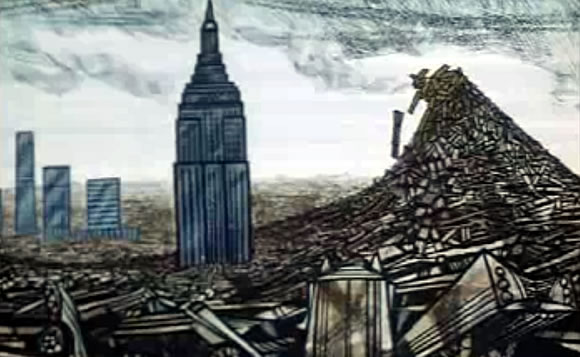Vine is a sweet little smart-phone app that allows you to shoot short video clips and post them immediately. What makes Vine unique is how short the clips are and how it records video. It only records when you press the screen and stops recording when you remove your finger, up to six seconds. You can start recording on the same clip by touching it again, creating loops of images. Jump cuts condense time, as you can see in the Vine I shot of skaters in our studio building.
A tap of the screen will get you one frame and with multiple taps you can start making frame-by-frame animation. You can go
Benny Hill-style with sped up reality or more painstaking hand-drawn cartoons. There are some fun, new video makers out there, such as the pencil sketcher
Pinot and the wooden man adjusting
Ian Padgham. The
Vine app is free so try it out! The check out these
tips from Mashable to make your Vines even better.

 A world overrun with automobiles is the dystopian nightmare of the cartoon "
A world overrun with automobiles is the dystopian nightmare of the cartoon "